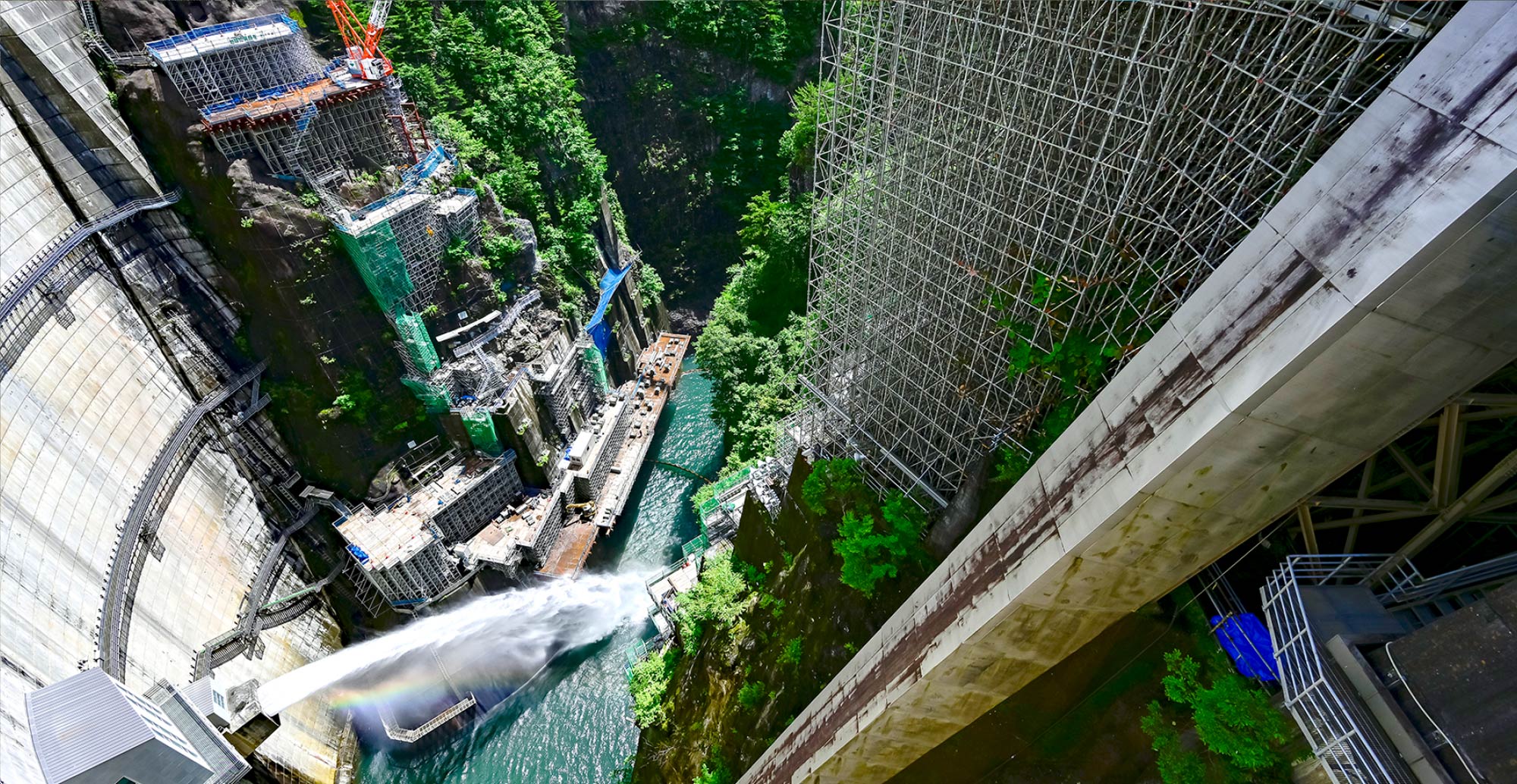
DAM REINFORCEMENT WORK
The Kawamata Dam, located upstream of the Kinugawa River in Tochigi Prefecture, is an arch dam with a height of 117m constructed in 1966 for flood control to prevent river flooding, supply agricultural water, and power generation.
Arch dam with a structure that bears water pressure from the reservoir by transmitting most of the water pressure to the bedrock on both banks.
At Kawamata Dam, to increase the strength of the bedrock that supports the arch action, bedrock improvement work using bedrock PS anchors (rock PS work at that time), which was the most advanced technology of those time, was adopted.
In this reinforcement work, while maintaining the function of the dam, new bedrock PS anchors, one of the largest in Japan with a maximum length of 75m and a maximum tensile force of 2,400KN, will install between the existing bedrock PS anchors which were installed at the time of dam construction.
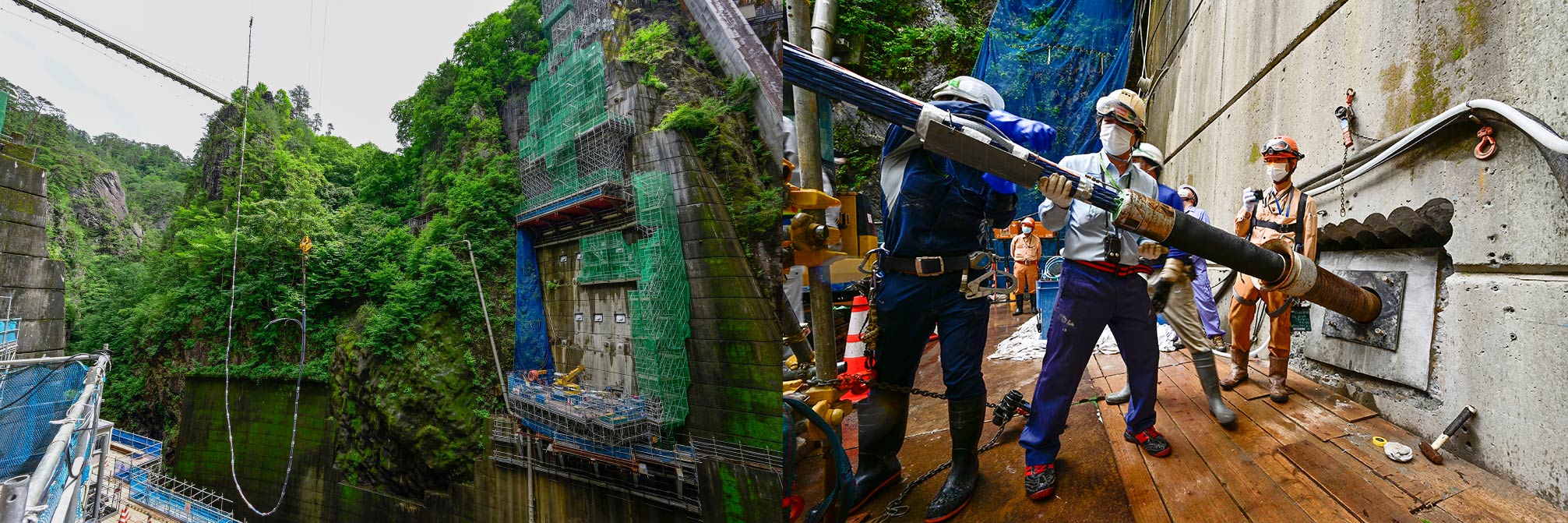
At the time of the Kawamata Dam construction, an arch thrust receiving wall (transmitting wall: TW) was constructed in the weak part of the left bank, and from the gallery installed in the TW, the mountain side (inner direction) and riverside (ground surface direction) was installed bedrock PS anchor. TW is a concrete wall that transmits the thrust acting near the abutment (*1) of an arch dam.
*1 Abutment
Slopes on both banks of the valley where the dam body is installed
The circumstance of TW and anchor installation in 1966
In this renewal work, since the TW was filled with concrete and the dam itself is in service, it could not be constructed in the same way as at the time of construction. Therefore, this time, when some of the bedrock PS anchors on the left bank pass the TW, by tensioning them in two stages, a technique called "two-stage tension" was adopted. In this way, a prestress to the bedrock is applied in the same way as at the time of construction.
The circumstance of renovation work of this time by "two-stage tensioning"
The intermediate part of the two-stage tensioning method adopted at the Kawamata Dam used a highly economical cloth packer (*2). The cloth packer was jointly developed by the Dam Technology Center and Obayashi Corporation for this renovation work.
In addition, the 90m-high work platform (work scaffolding), which was installed to cling to a steep precipice to install a huge bedrock PS anchor, is an individual technology of the Kawamata Dam renovation work.
*2 Packer
A component for surely grouting into the anchorage.

Under the guidance of the Bedrock PS Committee, which is composed of academics from the public and private sectors, we reliably install high-quality bedrock PS anchors.


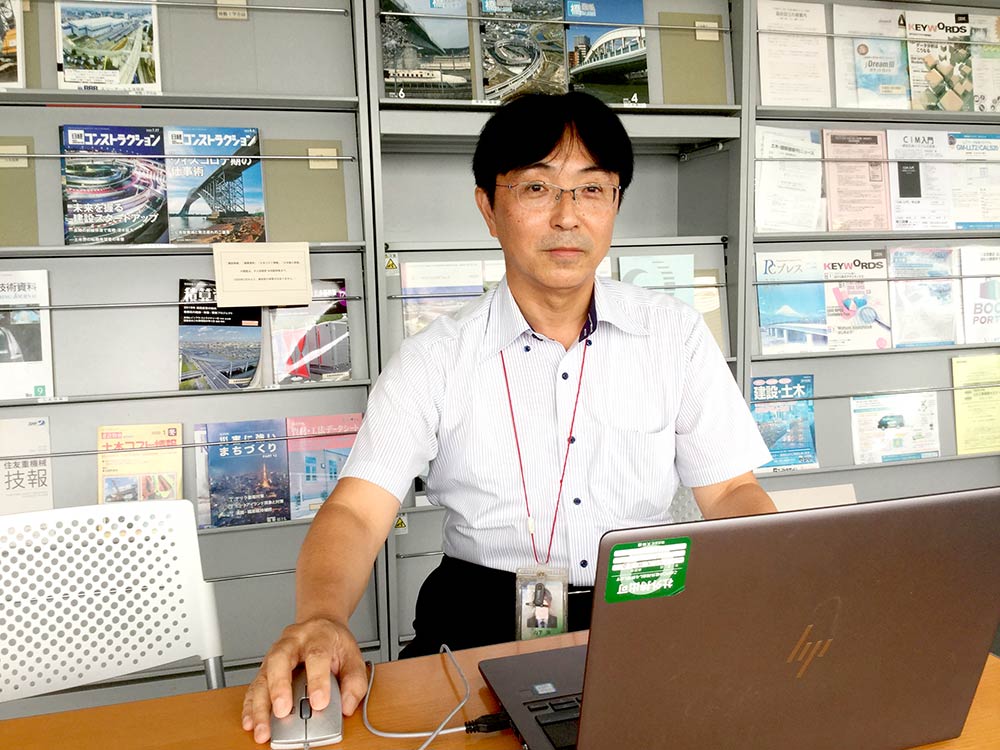
Obayashi Corporation Civil Engineering Headquarters Production
Design Department 4th Manager
A huge work platform (work scaffolding) that stands out in nature. This is the work platform for the 25t crane that supports the transportation of materials on site. It is usually supported by "rigid" H-beam steel pillars, but by utilizing the "flexible" structural characteristics of pipe-type scaffolding materials, we have confirmed through analysis and on-site measurements that it can withstand heavy loads. The work platform at the foot of the crane bends gently. However, this is proof that the crane load is widely distributed. A single scaffolding material is weak, but multiple scaffolding materials work together to support a heavy object.
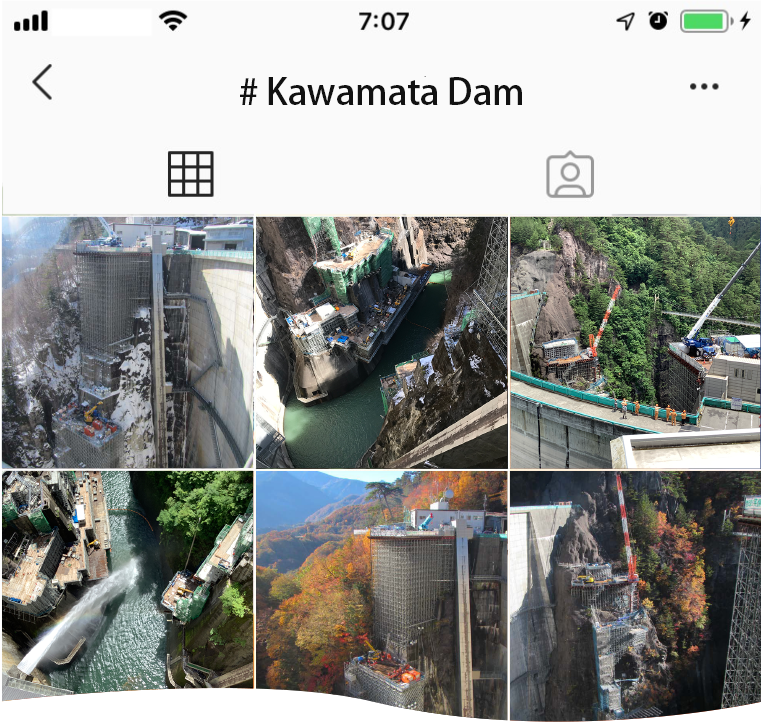

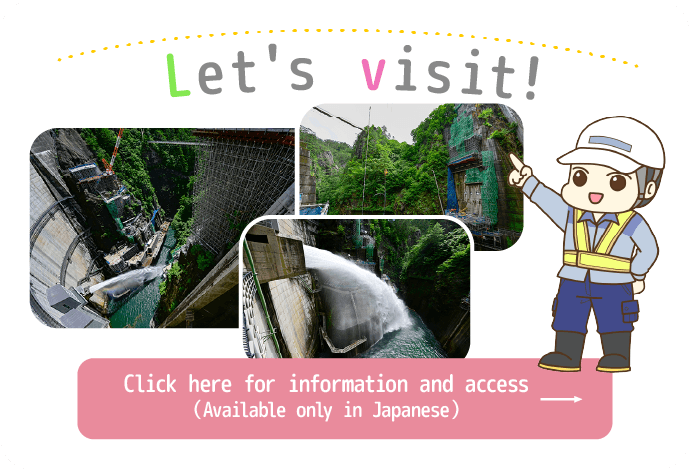
* Go to the Kinugawa Integrated Dam Control Office website of the Ministry of Land, Infrastructure, Transport, and Tourism.
* Please be sure to check the notes on the above site when you join for a visit.
![]()
Twitter hashtag
#川俣ダム
(Available only in Japanese)
![]()
Kawamata Dam Instagram
#川俣ダム
(Available only in Japanese)
![]()
YouTube keyword search
「川俣ダム」
(Available only in Japanese)
